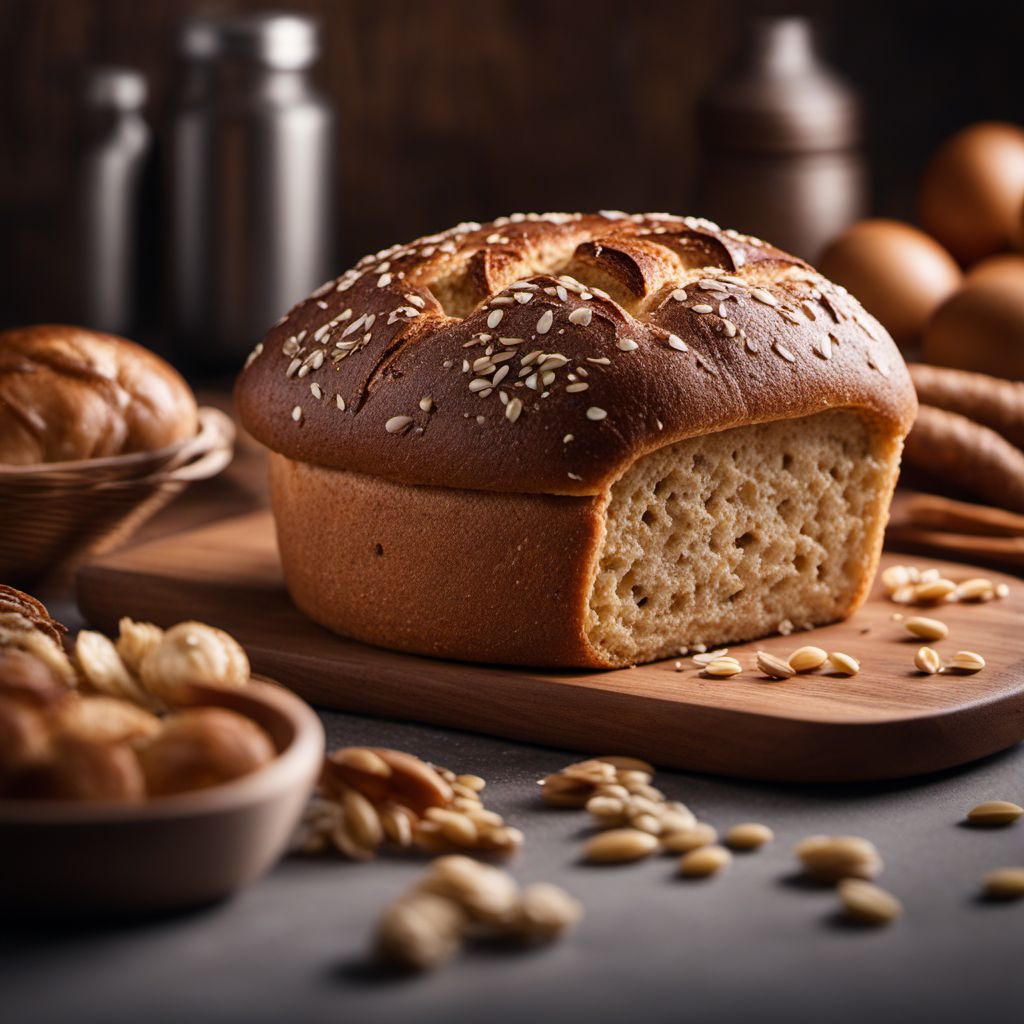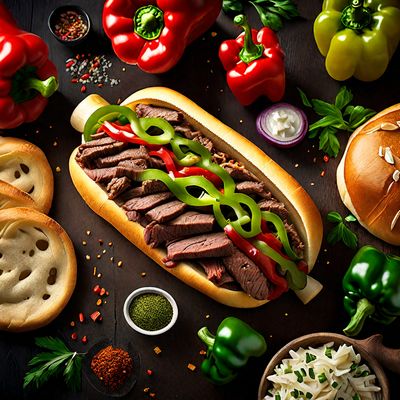
Ingredient
Multigrain bread and rolls
Wholesome Grains: Exploring the Nutritional Powerhouse of Multigrain Bread and Rolls
Multigrain bread and rolls are made from a blend of different grains, such as wheat, oats, barley, rye, and corn. This combination creates a unique taste and texture, with a hearty and slightly nutty flavor. The bread is typically denser and more filling than white bread, thanks to the presence of whole grains. The texture can vary from soft and chewy to crusty, depending on the recipe and baking method. Multigrain bread and rolls often have visible grains and seeds on the crust, adding visual appeal and a delightful crunch.
Origins and history
The concept of multigrain bread dates back centuries, with different cultures incorporating a variety of grains into their traditional bread recipes. Ancient civilizations, such as the Egyptians and Greeks, were known to use a mixture of grains to create bread with enhanced nutritional value. Over time, multigrain bread gained popularity worldwide as people recognized the health benefits of consuming a diverse range of grains.
Nutritional information
Multigrain bread and rolls are a nutritional powerhouse, providing a good source of fiber, vitamins, and minerals. They are rich in complex carbohydrates, which provide sustained energy. Additionally, they contain essential nutrients like iron, magnesium, and B vitamins.
Allergens
Multigrain bread and rolls may contain wheat, which is a common allergen. Individuals with wheat allergies or gluten intolerance should check the ingredient list or opt for gluten-free alternatives.
How to select
When selecting multigrain bread and rolls, look for options that list whole grains as the first ingredient. Avoid products that contain refined grains or excessive amounts of added sugars. Freshly baked bread from local bakeries or artisanal shops often offer superior quality and flavor.
Storage recommendations
To maintain the freshness and quality of multigrain bread and rolls, store them in a cool, dry place in a breathable bag or container. Alternatively, you can freeze them in airtight bags for longer-term storage. Avoid storing them in the refrigerator, as it can cause the bread to dry out.
How to produce
Amateur bakers can produce multigrain bread and rolls by following a recipe that combines different grains, such as wheat, oats, barley, and rye. The grains can be ground into flour or added as whole grains for added texture. The dough is typically made by combining the grains with water, yeast, salt, and sometimes sweeteners or fats. After kneading and proofing, the dough is shaped into loaves or rolls and baked until golden brown.
Preparation tips
Multigrain bread and rolls can be enjoyed in various ways. They are perfect for sandwiches, toast, or simply served with butter or spreads. To enhance the flavor, lightly toast the bread or rolls before using. For added texture and visual appeal, top the bread with seeds or grains before baking.
Substitutions
Whole wheat bread or rolls can be used as a substitute for multigrain bread and rolls. While it may not offer the same variety of grains, whole wheat bread provides similar nutritional benefits and a comparable taste and texture.
Culinary uses
Multigrain bread and rolls are incredibly versatile and can be used in a wide range of culinary applications. They are commonly used for sandwiches, burgers, and sliders. They also make a delicious base for bruschetta, crostini, or bread pudding. The hearty texture of multigrain bread and rolls pairs well with both sweet and savory ingredients.
Availability
Multigrain bread and rolls are commonly available in most grocery stores, supermarkets, and bakeries worldwide.
More ingredients from this category
Recipes using Multigrain bread and rolls » Browse all

Bosnian Cheesesteak
Sarajevo Cheesesteak: A Bosnian Twist on a Classic American Dish

Sichuan-style Spicy Eggs Benedict
Fiery Eggs Benedict with a Sichuan Twist

Gourmet Gatsby Delight
Savory South African Gatsby: A Culinary Journey of Flavors

Vegan English Breakfast
Plant-Powered English Delight

Classic Tomato and Basil Bruschetta
Sun-Kissed Tomato and Herb Bruschetta

Canapés à la Française
Elegant French Canapés: A Symphony of Flavors

Dorset-Style Bulkie Roll
Dorset Delight: A Twist on the Classic Bulkie Roll

Tapas à la française
Petits Plats Français: Tapas Edition

Haute Cuisine Tapas
Elevated Spanish Small Plates

Sri Lankan Spiced Canapés
Exotic Spice Bites: Sri Lankan Canapés with a Twist

Thai-Style Cheesesteak
Spicy Thai Cheesesteak Delight

Classic BLT Sandwich
The Ultimate Bacon, Lettuce, and Tomato Delight

